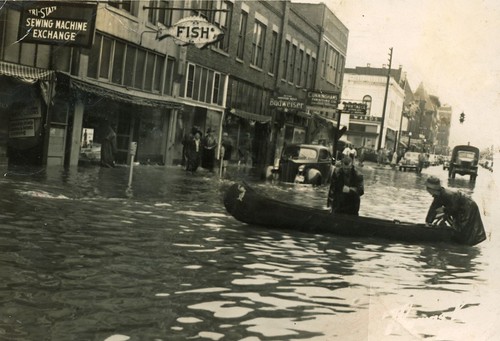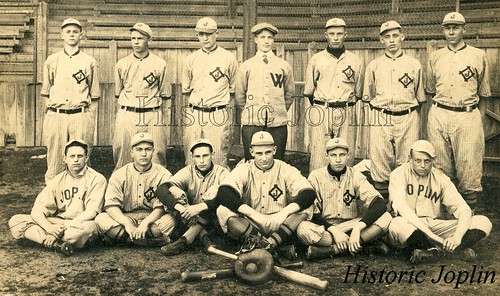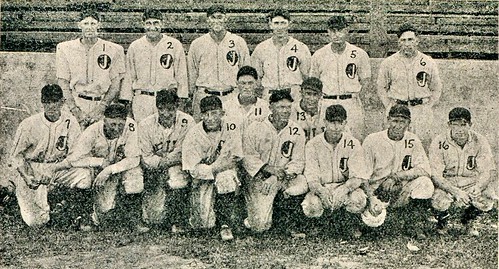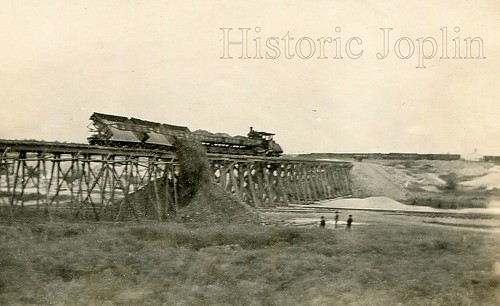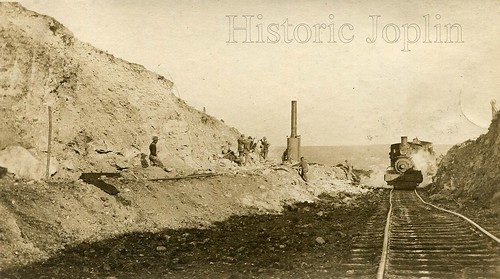For historians, it is a labor of love to research and investigate topics of interest. Often times, in the course of such research, one is repeatedly faced with missing pieces and the fear that some things are forever lost to the ages. In the course of writing our five part history of the Union Depot, we exhausted countless resources trying to find as many images of the depot in its earliest stages of being built. Our most successful find was the image below:
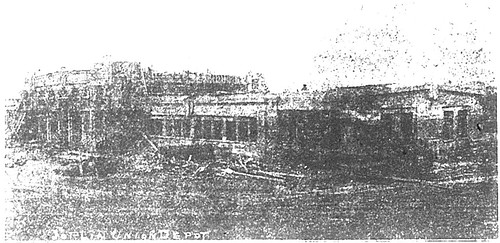
The depot nearing completion in March, 1911.
It was the best we believed that existed of Joplin’s beautiful depot under construction. That is, until now. It is with great pride and excitement that we unveil and share with you a newly discovered photo of the depot in the process of being built.
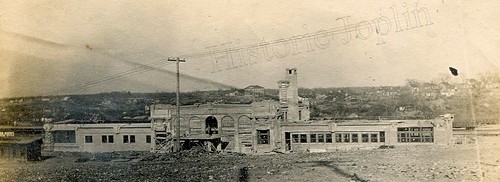
The Joplin Union Depot under construction sometime in the early months of 1911. Click on image to view larger sizes.
By the appearance and state of completion of the depot and the background trees, we estimate that this photograph was taken sometime in early 1911, quite possibly after the one we posted previously. The photograph was taken from Main Street or just off of Main Street. Of particular note is that the exterior finishes on the building are incomplete, such as the architectural touches on the south end of the building, the lack of glass windows and the white exterior is in the process of being added. In the background, you can spot Eugene Field School (since demolished) sitting as the massive building on a hill. Regretfully, we know little about the photographer, other than he may have worked for a railroad and lived in Oklahoma.
If you still have not read our five part history of the depot, you can find it at the following links: Part I, Part II, Part III, Part IV, and Part V.
Also, watch for more photographs associated with the construction of the Union Depot, which while not of the depot itself, are still quite fascinating and depict a previously discussed post on our site!
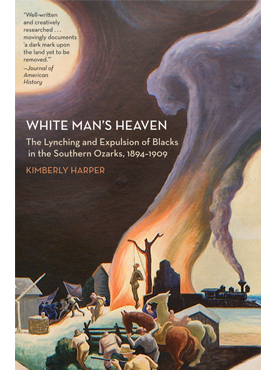 It’s been awhile, but it seems only natural to recommend a good book to help us understand these turbulent times. If you have not read it,”White Man‘s Heaven: The Lynching and Expulsion of Blacks in the Southern Ozarks, 1894-1909″ by Kimberly Harper explores the complex racial dynamics of the early twentieth century Ozarks. If you are like us, you might have grown up in Southwest Missouri during a time when there were few, if any, people of color in your community and wondered why. Well, this is why. One reader called it the Ozarks version of “To Kill a Mockingbird.”
It’s been awhile, but it seems only natural to recommend a good book to help us understand these turbulent times. If you have not read it,”White Man‘s Heaven: The Lynching and Expulsion of Blacks in the Southern Ozarks, 1894-1909″ by Kimberly Harper explores the complex racial dynamics of the early twentieth century Ozarks. If you are like us, you might have grown up in Southwest Missouri during a time when there were few, if any, people of color in your community and wondered why. Well, this is why. One reader called it the Ozarks version of “To Kill a Mockingbird.”
